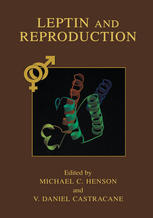

Most ebook files are in PDF format, so you can easily read them using various software such as Foxit Reader or directly on the Google Chrome browser.
Some ebook files are released by publishers in other formats such as .awz, .mobi, .epub, .fb2, etc. You may need to install specific software to read these formats on mobile/PC, such as Calibre.
Please read the tutorial at this link: https://ebookbell.com/faq
We offer FREE conversion to the popular formats you request; however, this may take some time. Therefore, right after payment, please email us, and we will try to provide the service as quickly as possible.
For some exceptional file formats or broken links (if any), please refrain from opening any disputes. Instead, email us first, and we will try to assist within a maximum of 6 hours.
EbookBell Team

0.0
0 reviewsThe isolation of leptin in 1994 and its characterization as a factor influencing appetite, energy balance, and adiposity, immediately thrust the polypeptide into the rapidly growing body of literature centered on the physiology of obesity. The growing clinical awareness of obesity as a major health risk in developed societies dovetailed perfectly with any of a number of roles that leptin might play in this abenant physiological condition. Almost unnoticed amidst the excitement generated by early leptin publications was the suggestion that the "fat hormone" might also regulate a wide range of systems and events important to reproduction, including pubertal development, gonadal endocrinology, fettility, and pregnancy. Recognizing this potential, a relatively small cadre of researchers began to examine leptin specifically as a reproductive hormone, thus creating a new and fertile field of investigation. Interest in this area has since gained momentum and an increased number of participants have now made significant contributions to our understanding of many leptin-related mechanisms that are relevant to reproductive biology. Leptin and Reproduction is the first major volume to specifically address leptin as a reproductive hormone and closely examines the advances made in the short time since this field of interest developed. Preeminent researchers ti'om many of the subdisciplines working within this area present a welcomed compendium of the wealth of related literature and voice novel interpretations of cun'ent advances.